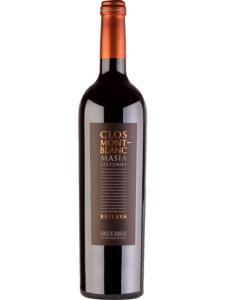Conca de Barberà is a small, little-known wine region in Catalonia, north-eastern Spain. Located right at the heart of Catalan wine country, it is surrounded on all sides by other wine regions: Costers del Segre to the north, Tarragona to the south, Penedès to the east and Montsant to the west. The word conca is Catalan for 'basin', and aptly describes the geography here. The basin in question is that formed by the combined valleys of the Francolí and Anguera rivers, above which rise various low-lying mountain ranges.
The official Conca de Barberà DO title was created in 1985, but as most grapes grown in this area are used to make sparkling Cava, the quantity of Conca de Barberà wine actually produced each year is relatively small.
The Mediterranean climate which surrounds the 'Conca' means long, warm summers and mild winters. However, the hills which encircle the area introduce some continental influences, meaning higher diurnal temperature variations than are experienced right on the coast. Increased altitude (the valley floor itself lies around 1300ft / 400m above sea level) emphasizes this effect slightly, while also preventing daytime temperature from rising too high. This all helps the grapes to preserve their natural acidity, contributing to the freshness and structure of the wines made here.
The soils in the Conca contain a high proportion of limestone – one of the area's key advantages as a viticultural zone. Limestone's high porosity gives it excellent water-retention properties, which off-sets the area's relatively low rainfall. It is also quite poor in mineral nutriment, which forces the vines to dig deep, strong root systems in search of nourishment. At higher locations, on the slopes of the Serra de Prades hills, slate replaces limestone. Slate-rich soils are particularly prized for growing red-wine varieties, and are collectively referred to by the Catalan word for slate, llicorella.
The leading white-wine varieties in Conca de Barberà wines are, perhaps unsurprisingly, those used in Cava production: Macabeo and Parellada, and more recently Chardonnay. It was the local white wines which originally established Conca de Barberà's reputation but it is now the red wines which are the most highly praised. Garnacha, Mazuelo (Carignan), Ull de Llebre (Tempranillo), Cabernet Sauvignon and Merlot are the most successful red-wine varieties. The most idiosyncratic variety is unquestionably Trepat – a variety grown only in this part of Spain. It is used both to make a light, bright, fruity rosé wines, both sparkling Cava Rosado and still Conca de Barberà Rosado.
It is presumed that the Romans introduced viticulture to this area in ancient times. As in so many regions of Spain, the vines were largely neglected during Moorish rule, but viniculture enjoyed a resurgence after the Christian reconquista in the 8th Century. The monasteries of the Cistercian Order played a critical role in winemaking here during the Middle Ages, as they did in various parts of Catalonia. Nowhere is this more obvious than in neighboring Priorat. One of the most sought-after Conca de Barberà wines – Miguel Torres' Grans Muralles – is named for the grans muralles (fortified walls) which surround the monastery at Poblet.


